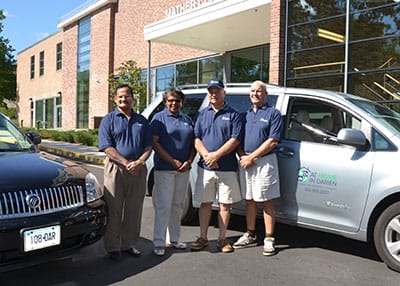After 20 years of working with entrepreneurs who were starting for-profit businesses, I became immersed in the formation of a new nonprofit. During that experience, I followed these five steps to launch and build the venture—steps that may help others replicate our success.
Step 1: Recognize the Value of the Idea.
When I first read about Beacon Hill Village, a nonprofit in Boston that helps local people stay in their homes as they age, I saw the value of the idea. Rather than moving to assisted living, seniors could join the Village, pay membership dues, and have a suite of concierge services coordinated and delivered to them at home—anything from meals to physical therapists. Soon after an article about Beacon Hill Village appeared in The New York Times, two older women in my church, the First Congregational Church of Darien, Connecticut, approached me as the co-president of the church’s women’s association. Could we launch something similar? We quickly attracted a small group who saw the merit of the concept and formed a committee to evaluate it further.
Step 2: Conduct Research by Reaching Out.
A little online research showed us that a nascent “aging in place” movement was spreading across the country. An AARP study had revealed that 90 percent of seniors want to remain in their homes rather than move to assisted living or a nursing home. Our committee fanned out to talk with other churches and local social service agencies to see if anyone else was providing an aging-in-place service.
We soon connected with a wider movement and learned that the Darien Community Fund, a nonprofit similar to the United Way, was forming a planning committee to look into the feasibility of establishing an aging-in-place program in our town. I joined this new, larger committee and was soon conducting research through self-run focus groups, a mailed survey and a conference with providers of senior services.
Our research clearly showed that older adults in our town had a need and a desire for services that could help them remain at home. The top three services people wanted were: transportation, handyman services and referrals to vetted service providers.

Home In Darien provides a regular transportation service to local seniors, among many other volunteer-driven services. Photo credit: Home In Darien.
Step 3: Don’t Duplicate.
During our focus groups, seniors told us not to duplicate services that were already in place. The seniors’ caution to avoid squandering resources made even greater sense as we talked in more detail with the directors of similar organizations. Established nonprofits told us that they did not like new organizations treading on their turf without communicating with them. They wanted the new nonprofit to reach out to them and find ways to cooperate and collaborate.
It turns out that nonprofits are just as competitive as for-profit companies. They are all vying for a share of the market—competing for the same consumers and, importantly, the same sources of funding. The philanthropy pie is only so big, and the nonprofits clearly viewed its division as a zero-sum game. We discovered that even municipal agencies felt the pressure of competition, fearing that if a nonprofit could do the same job as their government departments, their budgets could be cut by fiscal watchdogs.
Step 4: Develop a Business Plan.
Our sponsoring agency officially turned our committee into an advisory board, and we hired a coordinator to start a pilot program to begin to connect seniors to local services. In addition, the board set up a strategic planning committee tasked with writing a business plan and figuring out whether we should launch as an independent nonprofit or join with one that already existed.
That meant we needed to decide on a business model. Who would be our customers? What were their needs? How would we uniquely meet their needs? What would be our sources of revenue? The questions were not any different from the ones any entrepreneur needs to ask. Since I’m a business plan writer by trade, I volunteered to write our plan.
After months of meetings that proceeded at a seemingly glacial pace, we reached a consensus to run with a model that made every over-60 Darien resident a member of Aging In Place in Darien. Membership was free, and all our revenue would come from donors and grants. We would continue to connect seniors to available services and directly deliver others through a corps of volunteers. To get the word out, we planned a newsletter, a free luncheon, a website and an email list.
Step 5: Communicate, Cooperate, Collaborate.
While we were developing our plan, our board set up committees to promote communication among area agencies and to advise our paid program coordinator on how we should best offer the services. Heeding our research, the committees consisted of representatives from organizations (nonprofit and governmental) that were already delivering senior services. These other providers were excited to be involved because we actively cooperated and collaborated with them. They gained users as we connected seniors with their services.
Communication, cooperation and collaboration became our watch words, so much so that our strategic planning committee recommended that we join with an existing 501(c)(3) charitable organization called Gallivant, which had been providing transportation services to Darien seniors for over 20 years. We saw no reason to form a second independent nonprofit serving the same population and going after the same donor pool. After some tense negotiations—we were an upstart proposing to join with a well-established organization—we agreed to a trial merger of one year.
I’m happy to say that we’ve been officially merged for four years and have a new name: At Home In Darien. Our organization has been very successful in our fundraising efforts, and we are making strides to generate greater awareness, gain more users and deliver more services.


























